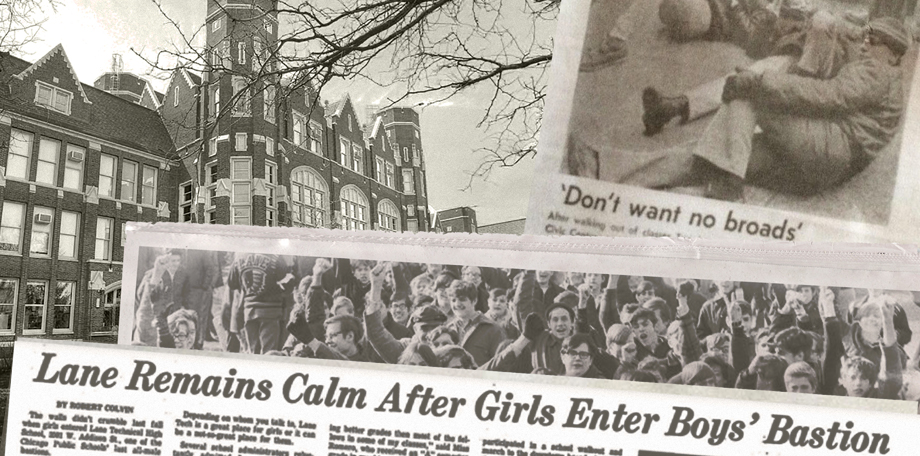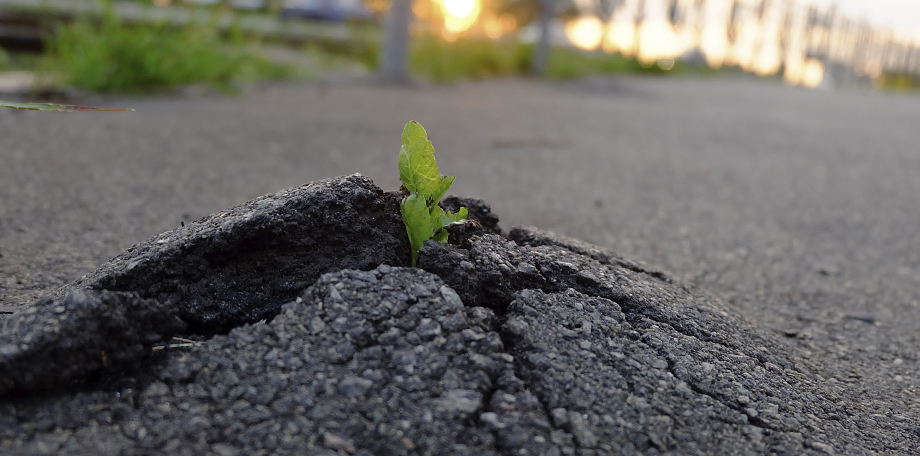Fifty years ago, I was one of the 386 girls who walked through the doors of Lane Tech High School for the first time. That milestone is now being honored with reunion events, a new plaque commemorating the girls and trailblazer panel discussions. I had the opportunity to speak at one recently, which brought back a lot of memories of the girl I was back then — and I was able to reflect on how those early experiences helped shape who I am today.
A History Lesson
Lane Tech was a boys-only manual training school when it opened in Chicago in 1908. In the late 1950s (at the height of the Space Race), the school shifted to focus on science and engineering and adopted a selective enrollment policy. As a result, enrollment dropped, and Chicago Public Schools recommended Lane Tech go coed. The ACLU of Illinois was already pushing the district to adopt a coed model.
In September 1971, the first cohort of girls entered the school – 386 of us along with five-thousand male students. (Yes, you read those numbers right – at the time, it was the largest high school in America.) Only two hundred of those girls were freshmen like me. It had been a dream of mine to be able to attend this prestigious high school, and I could not have been more excited for my first day at the beautiful campus. But the excitement morphed to confusion when I stepped off the bus and was greeted by a police officer who informed me that he would escort me to my class. It wasn’t until we turned the corner I understood why. We were met by angry protestors – parents, alumni and 1500 male students marched with signs and chanted, “We don’t want no broads!” Not exactly the warm welcome I had imagined.
The resistance came not only from the male students, parents and alumni, but also the administration and faculty (females included). The school’s advisory council even sent a letter to the Board of Education arguing the school should remain all-male. After a tumultuous start, I’m happy to report that today, Lane College Prep (name change) is led by a woman principal, who is also the first alumna to hold the position.
The Past Repeats Itself
While I sat as the lone girl in my first high school Biology 101 class with a television news camera pointed right at me, my female teacher opening the class with a five-minute diatribe on why girls will ruin the school. Between that speech and all the chaos around me described above – I knew I wasn’t wanted. Unfortunately, that wasn’t the only time in my life or career that I felt that way.
When I decided to go into the finance industry in the 1980s, I was faced with similar obstacles. I was one of the first female traders on the Chicago Mercantile Exchange from 1982 to 1997. There were literally five female traders to ten thousand male traders on the Chicago Mercantile Exchange at the time I was granted my trading badge. So, if I thought the .077 male/female ratio in high school was bad, it was nothing compared to the .0005 ratio I would face years later in business! But because it wasn’t the first time I was faced with odds like that, I drew on those former experiences to weather turbulence as it arose.
Related: Risk, Reward and Resilience
While I faced many challenges, I worked hard and quickly moved up in a successful trading career that lasted fifteen years, at times, beating out men for promotions, raises and industry accolades. Eventually, I found my niche as an executive coach and today, I am able to use my past experiences to help leaders transform into better versions of themselves.
Even today, with as much progress as has been made, there’s still a double standard with unconscious bias and implicit bias toward women in the workplace. In my coaching sessions, I hear how the words used in performance reviews are different for women and how women are assessed negatively when they show the exact same behaviors men show at the office. Unfortunately, most people are still blind to this gender bias that is still happening today.
Emotional Intelligence Can Start Early
My early experiences helped shaped me into the adult I am today by providing opportunities to build a solid foundation of resilience. When you spend four years of high school in a hostile environment, it prepares you for the moments we all encounter in life and in business. I learned at a young age that grit will serve you well as you strategically maneuver through life and business.
When you are faced with hardships early on in life, how you react to those experiences can inform how you “play the game” later in life. You have increased situational awareness, even hypervigilance at times, so you know what is going on around you, and you can “read the room” easier than others. You have more self-awareness, which allows you to see situations from multiple perspectives. You have a level of empathy which allows you to understand someone else’s feelings even if they differ from your own. These are all core factors of emotional intelligence.
Emotional intelligence is a concept largely attributed to psychologist Daniel Goleman, who differentiated intellectual intelligence from emotional intelligence in the mid-1990s, defining the latter as the ability to identify, assess and manage emotions in one’s self and in others. It’s the number one quality I look for in someone when hiring. It’s also the most important factor for success when leaders ascend the ladder in business.
Practicing Resilience
If you experienced something early in life that was particularly challenging, you can use that experience to help build your own resilience. Resilience lets you quickly bounce back from a situation rather than be paralyzed by it. The good news is that resilience can be learned and strengthened the more you practice it.
Neuroscience indicates that our brains dynamically change and develop throughout our lives in a process called neuroplasticity. This is the lifelong ability of the brain to recognize neural pathways based on new experiences. It plays a huge part in building resilience.
When we focus on increasing resilience, we actually carve new neural pathways in our brain which allow for quicker and more habitual travel of information. So, the more you practice resilience, adopting to situations by embodying different perspectives, the more resilient you will become.
Here are some ways to produce powerful new connections to build resilience over time:
- Learn to manage and support your physiology. From exercising to getting enough sleep to practicing diaphragmatic breathing exercises, when you can support and even manage your body’s physical responses, you can cope with stress better.
- Practice awareness. To build an understanding of your mood states and their effect on others, you must first be able to identify that mood state. That’s why I put together a comprehensive list of over 850 words for feelings — including emotions, moods and physical sensations (somatic states). It’s a great tool for learning, reference or exploration.
- Change your lens. We often talk about the different lenses we look at life through. When you can change the way you think about negative events, you are actually building new neuro-synapse connections. Overtime, you will become more agile in your thinking and instead of viewing experiences from states of resentment, blame, excuses or denial, all of which will make you feel powerless, you’ll have the capacity to also evaluate the situation from a place of gratitude, empathy and ownership. Seeing the opportunities will empower you to act/react in a positive way.
- Maintain perspective. When you are faced with a situation that seems overwhelming in the moment, consider the long-term. Will that event make a difference in the long-run? If not, it’s not worth your time and effort to blow it out of proportion now.
- Work on your self-confidence. Negative early experiences can result in self-confidence and self-esteem issues. If you feel you have been damaged from others, you can learn how to stop engaging in destructive patterns of behavior and explore why you may see yourself as being less than other people. You can actively change negative self-esteem tendencies by developing self-nurturing, self-encouraging, and self-enhancing behaviors.
- Be flexible. Sometimes in life, it’s necessary to scrap initial plans and change your course. Resiliency allows you to go with the flow smoothly.
In these turbulent times, who wouldn’t want to be more resilient and move through work and life with less effort and more optimism? If you are having trouble navigating your early experiences and building your resilience, it’s time to work your self-awareness and mindfulness. And, perhaps consider an executive coach as an expert guide to assist you in your journey and expedite the process.
Resilience is a discussion point of my new book Leading Lightly coming in March 2022. Part leadership, part mental fitness, part health and wellness guide, Leading Lightly empowers you to work at your best and operate at your fullest potential. Start reading it now!




